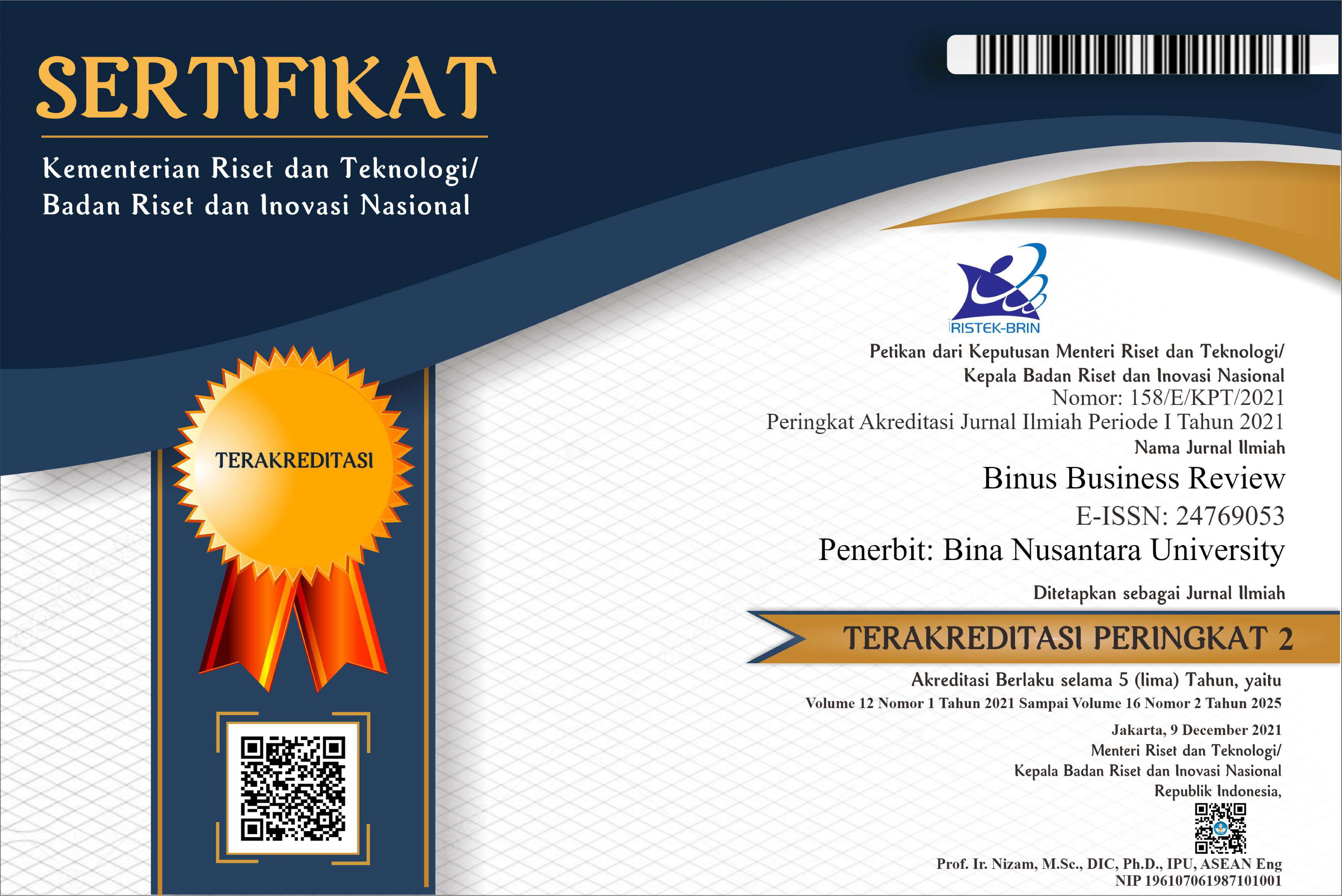Factors Affecting Internationalization of Indonesia Franchise Companies
DOI:
https://doi.org/10.21512/bbr.v4i1.1033Keywords:
internationalization, franchise company, growth, PESTEL analysisAbstract
Franchise is one of successful business strategies in business expansion. Franchise format has been already adopted in all countries. The success is proven in the world and also in Indonesia. Franchise system can be implemented not only in franchisor country but also in other countries. The spirit of internalization is not only because of market saturated, but also to increase reputation of franchise companies and to follow competitors or customers. Important thing discussed in this research is the franchise life-cycle, franchise growth model, and franchise companies’ profile. It is found that the Indonesia franchise companies are in the introduction stage. The stage in life-cycle shows its reputation. This study used literature review as methodology, and the purpose of this study is to give a big picture for Indonesia franchise companies to make internationalization. There are some Indonesia franchise business profiles in the discussion part. The factors affecting franchise internationalization were analyzed by PESTEL analysis. Some strategies should be prepared in making decision to go international. At the end, there are some recommendations and future research relating to internationalize franchise business.Plum Analytics
References
Bradley, F. (2002). International Marketing Strategy. Fourth Edition. Prentice Hall.
Castrogiovanni, G. J., and Justis, R. T. (2002). Strategic and contextual influences on firm growth: An empirical study of franchisors. Journal of Small Business Management 40(2): 98-108.
Ehrmann, T., and Spranger, G. (2005). Why do Franchisors combine franchises and company-owned units?. Center for Entrepreneurship, University of Muenster. Social Science Research Network Electronic Paper Collection from http://ssrn.com/abstract=807346
Entrepreneur Magazine. (2007). www.entrepreneur.com
Halim, E. (2008). Factors Affecting Franchise growth: A comparison between Indonesia and The US data. Unpublished thesis. Jakarta: University of Indonesia.
Inma, C. (2002). Building Successful Franchises: The Influence of Franchise Heterogeneity and Relationship Management on Franchise Success. Murdoch University.
Justis, R. T., and Judd, R. J. (2002). Franchising. Second Edition. Thomas Learning.
Kostecka, A. (1983). Franchise Opportunities Handbook. US Department of Commerce. Bereau of Industrial Economics and Minority Business Development Agency. Washington, DC: US Government Printing Office.
Rachmadi, B. N. (2007). Franchising The Most Practical and Excellent Way of Succeeding, Jakarta: Gramedia Pustaka Utama.
Sharma, A., & Kesner, I. F. (1996). Diversifying entry: Some ex ante explanations for postentry survival and growth. Academy of Management Journal, 39 (3), 635-677
Sherman, A. J. (2004). Franchising & Licensing. Two Powerful Ways To Grow Your Business in Any Economy. Third Edition. American Management Association.
Sukandar, A. (2006a). Direktori Franchise Indonesia. Jakarta: Franchise Indonesia. Indonesian Franchise Association.
Sukandar, Anang. (2006b). Franchise or Business Opportunity. Info Franchise Magazine 03. March 10, 2006 edition, 28.
Downloads
Published
Issue
Section
License
Authors who publish with this journal agree to the following terms:
a. Authors retain copyright and grant the journal right of first publication with the work simultaneously licensed under a Creative Commons Attribution License - Share Alike that allows others to share the work with an acknowledgment of the work's authorship and initial publication in this journal.
b. Authors are able to enter into separate, additional contractual arrangements for the non-exclusive distribution of the journal's published version of the work (e.g., post it to an institutional repository or publish it in a book), with an acknowledgment of its initial publication in this journal.
c. Authors are permitted and encouraged to post their work online (e.g., in institutional repositories or on their website) prior to and during the submission process, as it can lead to productive exchanges, as well as earlier and greater citation of published work.
USER RIGHTS
All articles published Open Access will be immediately and permanently free for everyone to read and download. We are continuously working with our author communities to select the best choice of license options, currently being defined for this journal as follows: Creative Commons Attribution-Share Alike (CC BY-SA)




















